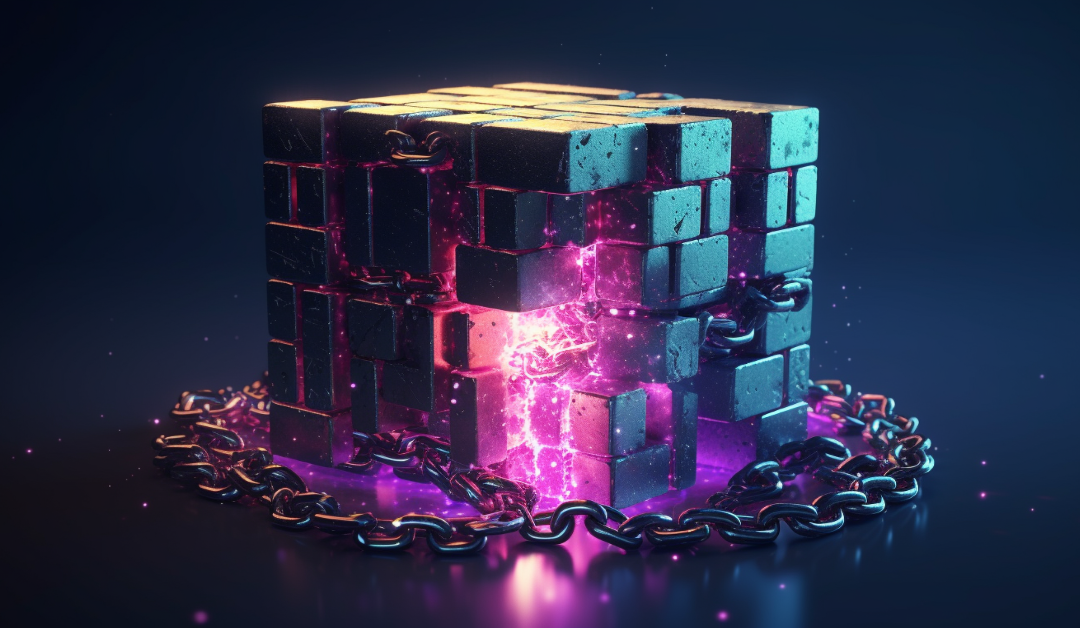
by admin | Jul 19, 2023 | Blockchain, Learn
Definition of Account Abstraction:
Account abstraction is a concept in blockchain technology that refers to the separation of the user account layer from the smart contract layer. In traditional blockchain systems, user accounts and smart contracts are treated as separate entities, with user accounts holding funds and smart contracts executing specific functions. With account abstraction, a smart contract can directly own and control funds, blurring the lines between user accounts and smart contracts.
Traditional Account Model in Blockchain:
In most blockchain networks, users hold funds in external accounts (commonly referred to as “Externally Owned Accounts” or EOAs) that are distinct from smart contracts. To execute a smart contract, users must initiate transactions from their accounts, involving gas fees for computation and storage on the blockchain.
How Account Abstraction Works:
Account abstraction involves reimagining the way funds and smart contracts are managed on a blockchain. In an account abstraction model, smart contracts can act as autonomous entities that own and control funds, rather than relying solely on external accounts to execute transactions.
Benefits of Account Abstraction:
a. Enhanced Flexibility:
Account abstraction provides developers with greater flexibility in designing smart contracts. Contracts can hold and manage their funds directly, enabling complex financial operations and reducing the need for multiple transactions.
b. Reduced Gas Costs:
With account abstraction, the separation between user accounts and smart contracts is less rigid. As a result, the number of transactions needed to perform a specific task can be reduced, leading to lower gas costs.
c. Improved Scalability:
By allowing smart contracts to directly control funds, account abstraction can enhance scalability by optimizing the use of resources within the blockchain network.
d. Increased Privacy:
Account abstraction can improve privacy for users by allowing smart contracts to own funds independently, reducing the visibility of individual transactions from external accounts.
Implications for Blockchain Ecosystems:
a. Smart Contract Evolution:
Account abstraction opens up new possibilities for developers to create more sophisticated and feature-rich smart contracts that can interact seamlessly with funds and other contracts.
b. Security Considerations:
With account abstraction, the role of smart contracts as financial actors becomes more prominent. This shift requires heightened attention to security measures and the potential risks associated with complex financial interactions.
c. Interoperability:
Implementing account abstraction requires standardization across different blockchain platforms. Interoperability efforts can enable seamless integration of account abstraction across various networks.
Examples of Account Abstraction in Practice:
a. Ethereum:
Ethereum, a leading smart contract platform, has been exploring the concept of account abstraction through its Ethereum 2.0 upgrade. This upgrade aims to increase scalability and efficiency through various mechanisms, including account abstraction. b. Other Blockchain Projects:
Other blockchain projects are also considering or implementing account abstraction to improve their networks’ performance and usability.
Conclusion:
Account abstraction is an innovative concept that holds promise for enhancing the functionality and efficiency of blockchain networks. By enabling smart contracts to directly own and control funds, account abstraction offers greater flexibility, reduced gas costs, and improved scalability. While it is still a relatively nascent concept, ongoing research and development in this area will likely drive its adoption in various blockchain ecosystems.
As the crypto industry continues to evolve, account abstraction may play a crucial role in shaping the future of blockchain technology and unlocking new possibilities for developers and users alike. Keep watching Fintech Express for more guide articles.

by admin | Jul 15, 2023 | Blockchain
Introduction
Passive income from NFTs (Non-Fungible Tokens) can be an exciting opportunity for individuals interested in the digital art and collectibles space. Here are some ways to potentially earn passive income from NFTs:
How to Make Money Passively from NFTs
- Royalties from Secondary Sales:
Many NFT platforms allow creators to set royalties on their artwork, typically a percentage of the sale price they receive whenever the NFT is resold in the secondary market. By creating and selling NFTs with a resale royalty, you can earn passive income as your artwork appreciates in value and changes hands between collectors.
- Staking and Yield Farming:
Some NFT platforms offer staking and yield farming opportunities where you can lock up your NFTs as collateral to earn additional tokens or rewards. These rewards can come in the form of native platform tokens, governance tokens, or other cryptocurrencies. Staking and yield farming can generate passive income based on the value and demand for the tokens you earn.
- Renting or Licensing NFTs:
If you own valuable NFTs, you can explore renting or licensing them to other users. This allows individuals or businesses to use your NFTs for specific purposes or display them in virtual environments, and you can earn passive income through periodic rental fees or licensing agreements.
- Fractional Ownership:
Fractional ownership platforms allow you to tokenize your NFTs and sell fractional shares to multiple investors. This enables you to earn passive income from the ongoing ownership and trading of these shares. As the NFT’s value increases, so does the value of the fractional shares, potentially generating passive income from capital appreciation.
- NFT Marketplaces and Affiliate Programs:
Some NFT marketplaces offer affiliate programs where you can earn a commission by referring buyers or sellers to the platform. By sharing your affiliate link or referral code, you can earn passive income when others transact on the platform using your unique referral link.
- Curating or Managing NFT Collections:
With the growing interest in NFTs, there is a need for skilled curators and managers who can create and maintain collections of NFTs. This could involve curating a collection of NFT artworks or managing a portfolio of NFTs for investors. You can earn passive income by charging fees for your curation or management services.
- Participating in NFT Pools or Funds:
NFT investment pools or funds allow multiple individuals to pool their resources and invest in a diversified portfolio of NFTs. By contributing to these pools or funds, you can earn passive income based on the collective performance of the NFT assets held within the pool.
- Creating NFT-related Content:
If you have knowledge and expertise in the NFT space, you can create educational content, tutorials, or guides related to NFTs. You can monetize this content through platforms like YouTube, podcasts, or creating paid courses or memberships, allowing you to earn passive income from the views, subscriptions, or course sales.
- NFT Gaming and Play-to-Earn Models:
Some blockchain-based games incorporate NFTs and allow players to earn tokens or rewards by playing the game or completing certain tasks. These play-to-earn models provide opportunities to earn passive income by owning and utilizing NFTs within the game ecosystem.
- NFT Lending and Borrowing:
Some platforms allow users to lend their NFTs to others in exchange for interest or lending fees. Alternatively, you can borrow NFTs for specific purposes and potentially earn income from the borrowed assets. This can be beneficial for individuals who own highly desirable NFTs and are looking to generate passive income from their holdings.
Conclusion
Remember, while these methods offer potential for passive income, they also carry risks and require careful research and consideration. The NFT market is highly dynamic and subject to volatility, so it’s important to assess the risks associated with each approach and make informed decisions based on your risk tolerance and investment goals.

by Samuel Mbaki | Jul 14, 2023 | Blockchain
Key Points
- Multichain has released a report indicating that Chinese Police took away its CEO Zhao Jun on May 21, 2023
- Multichain CEO Zhao Jun has not been heard from since May, and the MPC node operators have all their operational access keys to the MPC node servers revoked.
- The company claims there is currently no access to Zhao Jun’s cloud server account; therefore, no one can log onto the MPC Servers.
Public communication indicates Chinese Police reportedly took Multichain CEO Zhao Jun in May; since then, no one has heard from him. Multichain suspiciously claims no one can access Jun’s cloud server; thus, everyone is locked out of MPC node servers and cannot access investor funds stashed away by his sister.
Multichain CEO Zhao Jun not heard from since May
Multichain has released an announcement asking GoDaddy to help them bring down Multichain.org to keep customers from using the Multichain Service anymore. The team claims it wants to take this step as it lacks alternative sources of information and operational funds, forcing it to cease operations.
In connection to the missing of Multichain CEO Zhao Jun, the team has reported that it had established a connection with his family and learnt that all the tech devices belonging to Zhao Jun had been taken away by the Chinese authorities. They indicated that since its inception, Zhao Jun used to control all operational funds and investments from Multichain users.
As such, the team could only maintain the project through its remaining access to some non-MPC servers that had not been revealed yet. Also, according to a lawyer’s advice, the team intends to comply with the Multichain CEO Zhao Jun family’s demands to keep details of the Chinese investigations under wraps.
Multichain explained that it released the news of Multichain CEO Zhao Jun going missing on May 30 and explained its technical difficulties. It, however, says that Zhao Jun’s family seems to have some access to the cloud server platform though it’s not clear how far they can go as they do not intend to allow Multichain to access it.
“On June 4, Zhaojun’s family successfully logged into the cloud server platform using the historical information on his home computer. However, Zhaojun’s family only allowed Multichain team engineers physical access to the home computer to fix technical issues with Router2 and Router5.”
At the time, the family and lawyer were in contact with the authorities. They did not give Multichain detailed information though they said Jun would be released soon. On July 7, Jun’s sister transferred investors’ assets locked on the MPC addresses. On July 9, she transferred the remaining user assets to the router pool and notified the team to the EOA address controlled by her.
“The funds were transferred to EOA addresses controlled by Zhaojun’s sister. 0x1eed63efba5f81d95bfe37d82c8e736b974f477b 0x6b6314f4f07c974600d872182dcde092c480e57b”
The family contacted Multichain on July 13, saying that Jun’s sister was also in police custody, and now there is no contact with her. According to the Multichain team, the status of the assets she ‘preserved’ remains uncertain. There are no operational funds to keep Multichain afloat, necessitating the closure of the multichain.org domain.
A rug pull at play?
A rug pull is a common type of crypto scams involving fraudulent developers luring investors into a lucrative project. At most times, there is always a flaw in the project code that allows the developers to have a back door to the funds accumulated.
In Multichain’s case, all these factors are satisfied. Multichain CEO Zhao Jun was in charge of controlling all funds, which means that no funds would flow from the accounts held by the protocol without passing through him. As such, it screams a centralized project.
Conveniently, he went missing, and all other MPC node operators were locked out of the MPC node servers. At the same time, the CEO’s sister transferred assets from secure MPC addresses to EOA addresses before conveniently going missing, after which Multichain now wants to bring down its website.
In all this, the team had nowhere communicated to investors about how funds flow. Also, they did not use litigation against the Jun family for denying them access to company funds while transferring them to their private addresses. Whether this is, a rug pull is up to you to decide.
Keep watching Fintech Express for more updates on crypto and other fintech-related developments.

by Samuel Mbaki | Jul 13, 2023 | Blockchain
Key Points
- Polygon has tabled a proposal that will bring MATIC’s technical upgrade
- Once approved, MATIC’s upgrade will make it a multipurpose token and be renamed POL
Polygon has submitted a proposal to the Polygon community seeking to upgrade its MATIC token to a multipurpose coin across multiple chains and rename it to POL token.
Polygon wants its native token to serve as a multipurpose coin in all chains
Polygon is an Ethereum scaling solution. It was built as an L2 on the Ethereum blockchain network to bring faster transactions and lower gas fees on the L1. It has a native token called MATIC. This coin has grown into one of the most remarkable projects recently.
Now Polygon has submitted a proposal to upgrade this native token into a multipurpose one that can be used to validate transactions on multiple chains. The proposal will the approved by the ecosystem’s community.
The POL token is set to span all protocols, including the zkEVM, SUpernets, and the network’s PoS chain. It will also align and incentivize the validators on the Network to perform better. A redesign of the protocol architecture is imminent upon the approval of the proposal introducing features such as infinite scalability.
It will allow for staking with the validators to open three incentive streams: protocol rewards, transactional fees, and other additional rewards. The upgrade will also include additional features like allowing the validators to perform multiple roles like validating transactions, ZK proof of generation, and participation in Data Availability Committees.
Keep watching Fintech Express for more crypto and other fintech-related developments.

by Samuel Mbaki | Jul 10, 2023 | Blockchain
Key Points
- Adam Back, a highly ranked computer scientist who some believe could be affiliated with the pseudomonas name Satoshi Nakamoto has expressed interest in seeing Bitcoin getting upgraded.
- He tweeted that a Bitcoin network upgrade that maintains security could be acceptable.
Adam Back is open to seeing Bitcoin get a network upgrade that could increase its bandwidth and storage and push the CPU cost of pool (or solo/stratum v2) full nodes to be 10X higher than full nodes while ensuring that the Bitcoin validating nodes remain unaffected.
Bitcoin developer and high-ranking Satoshi Nakamoto identity, Adam Back open to Bitcoin network upgrades
Adam Back is a Ph.D. holder in computer science and a renowned Bitcoin developer. He was one of the first cryptographers to build a digital electronic monetary system. Adam Back developed hash cash, a proof-f-work-based algorithm cited by Satoshi Nakamoto, the pseudomonas name behind Bitcoin.
Due to these connections with interest in digital electronic monetary systems, Adam Back is believed to have some ties with Satoshi Nakamoto. Nevertheless, he has never claimed to be Satoshi Nakamoto, nor has the real identity behind the pseudomonas name been revealed.
On July 9, he expressed interest in seeing Bitcoin get a valuable network upgrade amid the rollout of next-generation scaling solutions like ZKsync. Adam Back’s interest comes when Bitcoin gets more use cases via the support of inscriptions and the ability to harbor other digital assets. As such, the Bitcoin network would need scaling solutions sooner than later to avoid congestion.
In his tweet, he gave an instance of committed snapshots, snapshot validity ZKPS, Zerosync, utreexo-related things, sidechains, indexes,in-block comparison/coordinations signature aggregation, verifiable history compaction nimble wimble, power user workable 10X overhead, not 100-1000X data center only as the possible upgrades that could be done to the network.
He explained that such an upgrade on full nodes bandwidth, storage, or CPU load to construct blocks would ensure that they remain cheap and thus more decentralized.
Keep watching Fintech Express for more updates on Bitcoin, cryptocurrencies, and other fintech-related developments.

by admin | Jul 7, 2023 | Blockchain
Introduction:
Non-Fungible Tokens (NFTs) have emerged as a significant phenomenon within the digital asset space, revolutionizing the way we perceive and trade unique digital assets. As the NFT market continues to expand, it is essential for investors to understand the various types of NFTs available and the factors to consider before diving into the NFT industry. In this comprehensive guide, we will explore different categories of NFTs and provide insights into key considerations for successful NFT investing.
Part 1: Understanding Different Types of NFTs
1. Art NFTs:
Art NFTs are digital representations of visual artwork, encompassing various forms such as paintings, illustrations, digital art, and sculptures. These NFTs enable artists to tokenize and sell their creations directly to collectors, providing provenance and ownership verification.
2. Collectibles NFTs:
Collectibles NFTs are digital items that replicate the concept of physical collectibles. They include virtual trading cards, in-game items, virtual real estate, and rare virtual assets. Collectibles NFTs often hold sentimental value and can appreciate in rarity and value over time.
3. Gaming NFTs:
Gaming NFTs refer to in-game assets, characters, skins, and virtual land that can be bought, sold, and traded. These NFTs enhance gaming experiences, enabling players to own and monetize their virtual possessions across different games and platforms.
4. Virtual Real Estate NFTs:
Virtual Real Estate NFTs represent ownership of digital land or virtual spaces within metaverses. These Non-Fungible Tokens (NFTs) enable individuals to build, create, and monetize virtual environments, attracting businesses and communities within the digital world.
5. Domain Names NFTs:
Domain Names NFTs tokenize internet domain names, making them unique digital assets that can be bought, sold, and traded. They provide ownership and authenticity verification of digital addresses.
6. Music NFTs:
Music NFTs represent ownership or rights to music tracks, albums, concert tickets, and other music-related assets. These Non-Fungible Tokens (NFTs) offer new avenues for artists to monetize their work, connect with fans, and provide unique experiences.
Part 2: Factors to Consider for Non-Fungible Tokens (NFTs) Investing
1. Rarity and Scarcity:
Consider the scarcity and rarity of the NFT you are interested in. Items with limited supply or unique attributes often have higher value potential.
2. Authenticity and Ownership:
Verify the authenticity and ownership of the NFT by examining the blockchain records, verifying the creator’s identity, and ensuring proper rights and licensing.
3. Artist Reputation and Market Demand:
Assess the reputation and popularity of the artist or creator behind the NFT. Artists with established profiles and high demand often attract more attention and potential value.
4. Utility and Interoperability:
Evaluate the utility and interoperability of the NFT within various platforms, metaverses, or ecosystems. Non-Fungible Tokens (NFTs) with broader applications and usability may have increased long-term potential.
5. Community and Engagement:
Consider the community and engagement surrounding the NFT project. Active communities, collaborations, and ongoing development efforts can contribute to increased demand and value over time.
6. Market Trends and Liquidity:
Stay informed about market trends, price movements, and liquidity within the NFT space. Understanding market dynamics and timing your investments wisely can be crucial for maximizing returns.
7. Legal Considerations:
Be aware of legal implications and potential risks associated with NFT investments, including intellectual property rights, licensing, tax obligations, and regulatory changes.
8. Technology and Blockchain Scalability:
Assess the underlying blockchain technology and its scalability. Consider the efficiency, transaction costs, and sustainability of the blockchain network
to ensure long-term viability and growth of the NFT ecosystem.
9. Due Diligence and Research:
Conduct thorough research on the NFT project, its team, roadmap, partnerships, and any associated risks. Stay informed through reputable sources, forums, and communities to make informed investment decisions.
10. Risk Management and Diversification:
As with any investment, practice risk management and diversification. Consider allocating a portion of your portfolio to Non-Fungible Tokens (NFTs) while maintaining a balanced investment strategy across different asset classes.
Conclusion:
The NFT industry offers a wide range of opportunities for investors seeking unique digital assets with potential value appreciation. Understanding the various types of Non-Fungible Tokens (NFTs), from art and collectibles to gaming and virtual real estate, is essential for navigating the market successfully.
Additionally, evaluating factors such as rarity, authenticity, utility, market demand, and legal considerations is crucial when making informed investment decisions within the NFT industry. By conducting thorough research, staying informed, and exercising prudent risk management, investors can position themselves for potential growth and success in the dynamic world of Non-Fungible Tokens (NFTs).






